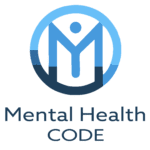

Connection doesn’t always begin with people — it can begin with tools. When loneliness or isolation sets in, we often need scaffolding to help rebuild connection. That’s where digital tools, apps, and real-world environments can offer powerful support. You don’t have to overhaul your life — simply choosing one meaningful method can shift your internal state and open doors for reconnection.
Digital platforms can help reintroduce consistency and comfort. Apps like Insight Timer, Calm, and Headspace are often known for mindfulness — but they also serve as connection anchors. They create space to pause, breathe, and reflect, which improves emotional regulation and prepares us for authentic connection. Platforms like Zoom, Marco Polo, and WhatsApp allow people to maintain real-time or asynchronous conversations that reduce the emotional distance caused by busy schedules or physical separation.
Real-world practices create embodied opportunities for connection. Volunteering, joining a community group, or attending a local event provides organic moments of interaction — with people, animals, or a cause. Take for example Leila, who started volunteering at a food pantry and said it became “the only place she felt seen” after a long bout of burnout. Or Darren, who enrolled in a local ceramics class after months of remote work and began forming friendships that grew beyond class hours.
The power of small consistent actions cannot be overstated. Even journaling — using tools like Daylio or Moodnotes — can help you track disconnection triggers and identify moments of potential connection. Connection isn’t just something we find; it’s something we gently practice. Every message sent, event attended, or reflection completed lays another brick in the bridge back to belonging.
63% of young adults (18–25) report using digital tools to manage mental health and maintain social connection. (Pew Research Center, 2022)
Volunteering for just 2 hours per week is associated with higher reported levels of purpose, meaning, and connectedness. (Journal of Social Service Research, 2020)
Mindfulness-based app users report a 38% improvement in emotional regulation and stress reduction within 10 days. (Frontiers in Psychology, 2021)
Daniel, a caregiver who felt isolated, began joining short daily meditation sessions via Insight Timer and commented, “It gave me something to connect to when I felt invisible.”
Kia, a college student, started a shared Google Doc with three long-distance friends where they journal weekly reflections — creating a shared space of empathy.
Victor, a retired veteran, found purpose through dog-walking at a local shelter — creating new bonds with volunteers and animals alike.